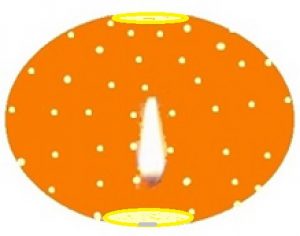Read Part 5
The ‘mixture of Atman and mind’
While the body-mind remains alive (i.e. continues to be animated by Consciousness), the person is a mixture, as it were, of both. If I am enlightened, I know that I am really the original Consciousness, Brahman, but I cannot escape the fact that I am also still a jIvAtman, with that same Consciousness reflecting in the intellect. If I am unenlightened, I either do not know about paramAtman or do not believe that this is who I really am. Instead, I identify with body, mind, attributes or functions. I mistakenly superimpose (adhyAsa) the properties of the mithyA body-mind onto the paramAtman.
The same applies even to ‘knowing’. When we say ‘I know’, whether or not we are enlightened, it has to be the reflected ‘I’ that is speaking. Shankara says in his bhAShya on Bhagavad Gita 2.21:
“ …the Self, though verily immutable, is imagined through ignorance to be the perceiver of objects like sound etc. presented by the intellect etc.; in this very way, the Self, which in reality is immutable, is said to be the ‘knower’ because of Its association with the knowledge of the distinction between the Self and non-Self, which (knowledge) is a modification of the intellect and is unreal by nature.” (Ref. 6)
Thus, it can be seen, that this provides an explanation for the fact that I may be enlightened and yet the mind can still be affected by pratibandha-s. It there are none, because the mind was purified prior to enlightenment, then I am a jIvanmukta, enjoying all of the benefits of a mind unsullied by negative emotions. Otherwise, I must continue to perform those sAdhana-s that will eliminate such tendencies before I can reap the ‘fruits’ of enlightenment, j~nAna phalam. Whilst both are still inevitably a ‘mixture’, the one with pratibandha-s still says ‘I’ with a significant element of jIvAtman; the one who has purified the mind says ‘I’ with a predominant element of paramAtman. Continue reading →


